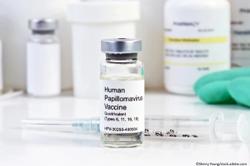© 2025 MJH Life Sciences™ , Patient Care Online – Primary Care News and Clinical Resources. All rights reserved.
Latest Guidelines and Best Practices on Cervical Cancer Screening
An interview with Jeff Andrews, MD, FRCSC, of BD Life Sciences
Cervical cancer remains largely preventable, yet screening gaps persist in the United States. The American Society for Colposcopy and Cervical Pathology (ASCCP) posted updated management guidelines on February 22, 2025, that now recognize the BD Onclarity human papillomavirus (HPV) assay, with extended genotyping, as an option for primary HPV screening.¹ By individually detecting 6 of the 13 oncogenic HPV types and grouping the remaining 7 into 3 pooled results, the assay enables more precise risk stratification and can help clinicians reduce unnecessary follow‑up testing. The new guidelines also endorse patient‑collected vaginal swabs for HPV testing, a change intended to widen access for individuals who face logistical, financial, or procedural barriers to in‑clinic screening.
Those barriers are underscored by findings from a Harris Poll survey commissioned by BD: 72% of US respondents reported delaying a gynecologic visit, most commonly because of fear, discomfort, or scheduling constraints; half were uncertain about recommended screening intervals, and 81% said they would prefer a less‑invasive, self‑collection option.²
In an interview with Patient Care, Jeff Andrews, MD, FRCSC, Vice President of Medical Affairs, Diagnostic Solutions, BD Life Sciences, discusses how extended HPV genotyping and self‑collection could narrow screening gaps and what the new ASCCP recommendations mean for everyday clinical practice.
References
- Becton, Dickinson and Company. BD Onclarity™ HPV Assay Added to ASCCP Guideline Updates [news release]. Franklin Lakes, NJ: BD; January 13, 2025.
- Becton, Dickinson and Company. Global Survey Highlights Barriers to Cervical Cancer Screening [news release]. Franklin Lakes, NJ: BD; January 9, 2025.



